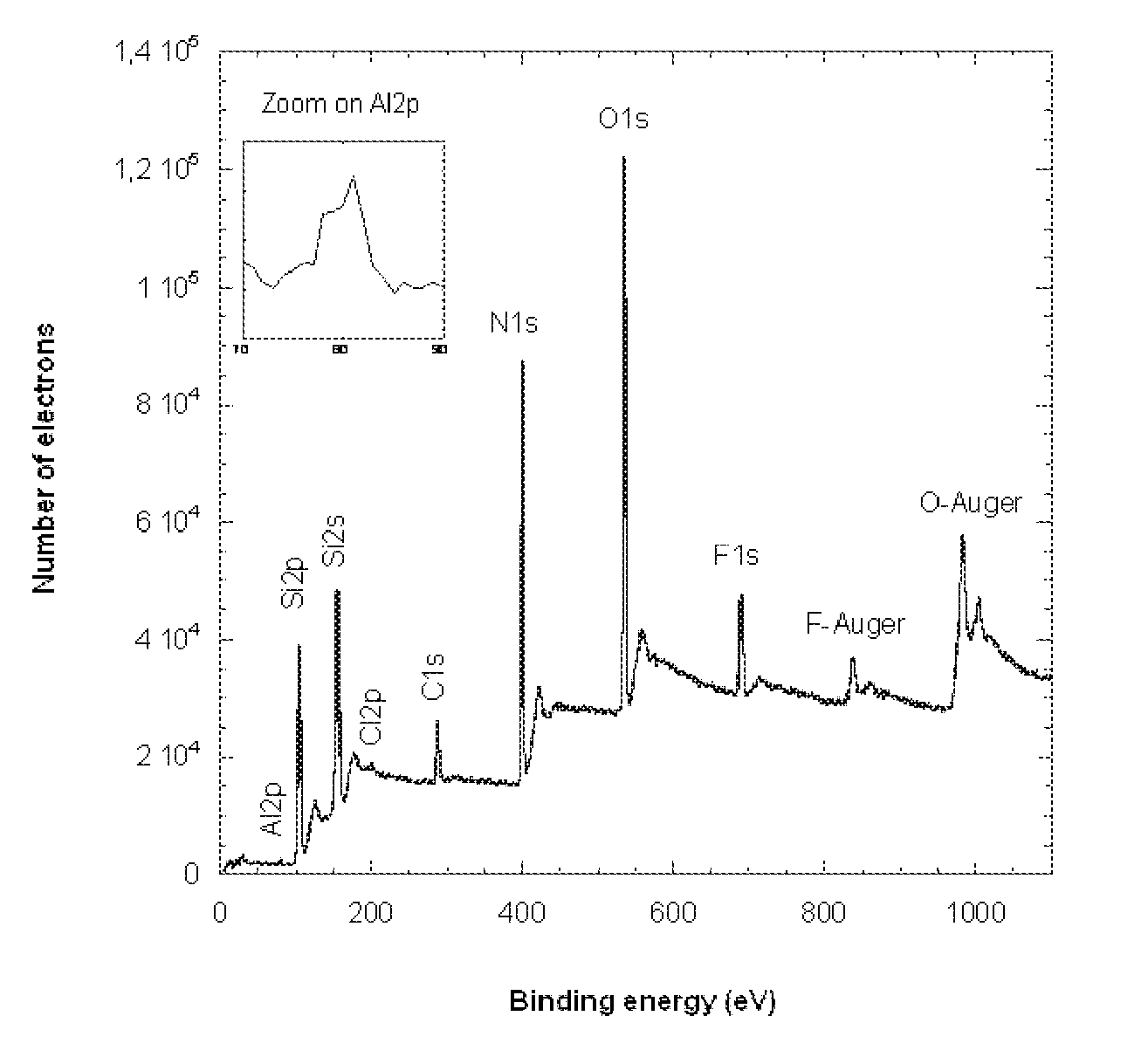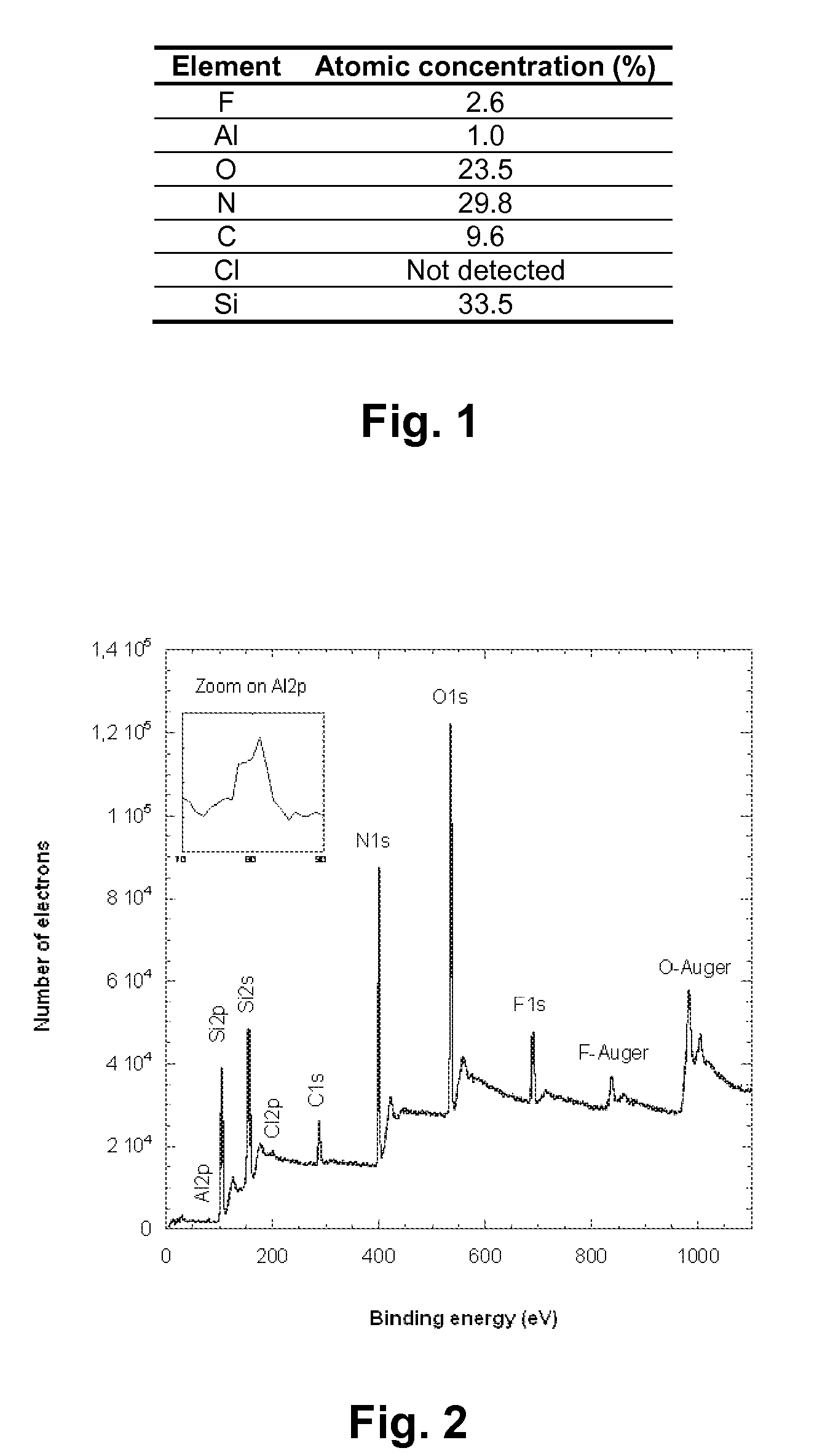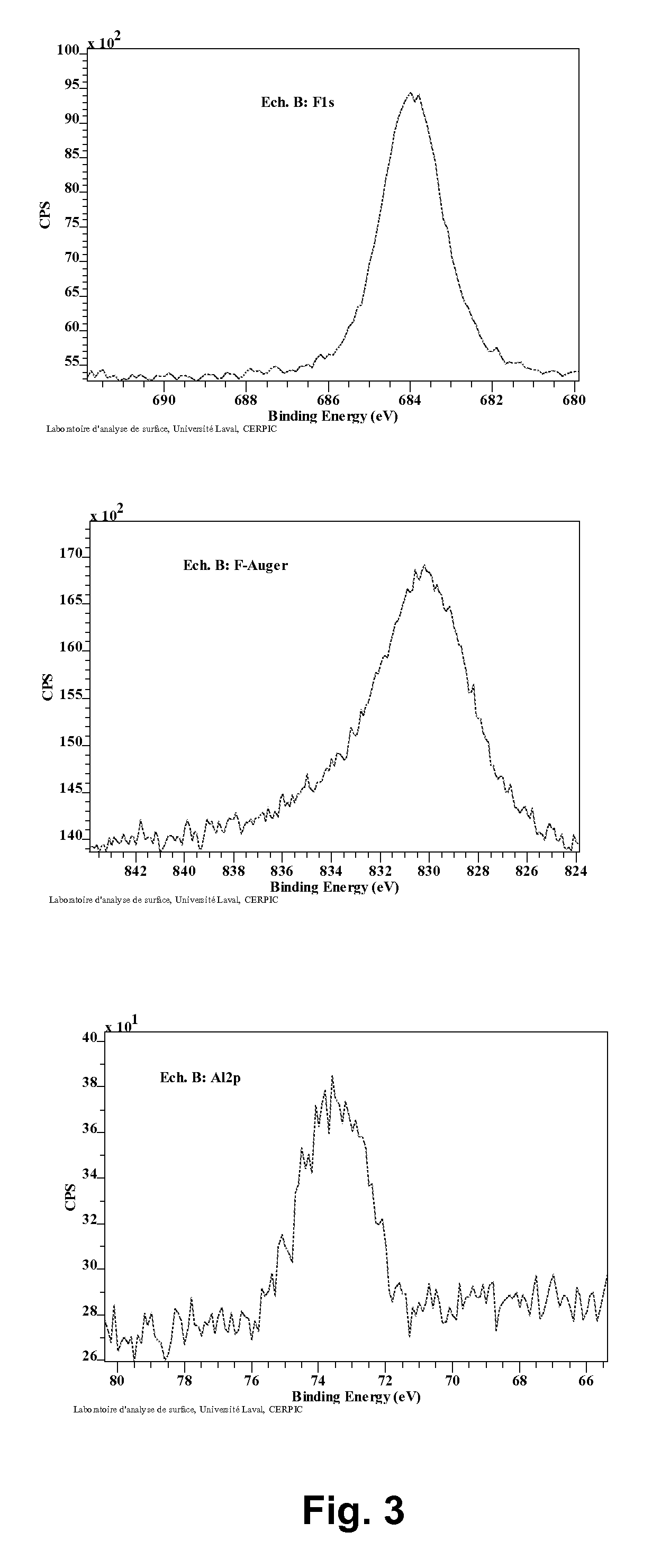The manufacture of Micro-Electro-Mechanical Systems (MEMS) such as micro-gyroscopes, micro-accelerometers, RF micro-resonators, micro-mirrors, micro-motors, micro-actuators and other such micro-devices integrating very sensitive moving mechanical parts causes a very serious challenge for a number of reasons including the facts that: a. These very sensitive mechanical parts are typically made of silicon (polysilicon or silicon-
germanium); b. The sacrificial material underlying these mechanical parts to be released is typically
silicon oxide; c. The etch stop layer underlying this
silicon oxide sacrificial layer is typically
silicon nitride or silicon (polysilicon or silicon-
germanium); d. The mechanical release of the mechanical parts requires the removal of the sacrificial material in liquid or vapor HF-based chemistries; e. A liquid HF-based solution does not allow one to perform a release in presence of a
CMOS compatible Al metallization scheme; f. A vapor HF-based approach on the other hand leads to undesirable post-release residues that are detrimental to the functionality of the MEMS devices as they block or limit the movements of the released parts.
The selected method must not lead to any
stiction that could obviously also be detrimental to the functionality of the devices.
The problem with liquid non-buffered-HF solutions is that they quickly
attack the Al-based metallization schemes which are
CMOS compatible.
TiN therefore may not be suitable for MEMS applications needing a low
interconnection resistance.
The problem with BHF solutions is that improperly rinsed BHF released wafers will result in an undesirable
precipitation of
solid ammonium fluorosilicate, (NH4)2SiF6 crystals under the released mechanical parts.
Based on the
CMOS compatibility requirements, gold (Au), although resistant to liquid HF-based solutions according to Willams et al., could not be considered as it is not
CMOS compatible.
Even though a liquid HF-based solution leads to severe issues in presence of metals for CMOS control / actuation
electronics, one could circumvent this problem by performing a release prior to the metallization step.
This however also involves many potential issues such as: a. potential
metal residues in-between released structures; b.
Sputtering of
metal is impossible due to item a above; c. Al or other
metal evaporation means a lift-off approach in conjunction with the
metal evaporation techniques.
Therefore, the
resist strip involves liquid
exposure during the remaining steps which would leave the devices prone to
stiction; and d. Low yield and cross-
contamination due to potential breakage of devices along the fabrication processes that could contaminate other products.
Such excessive etch requirements therefore require excessive etch times therefore leading to an
attack of the metal schemes to some extent.
Even though performing a Vapor HF release in the conditions used by Ouellet et al. prevents the etch of the metal structures, it still potentially leads to the formation of undesirable
fluorine-based by-products that are detrimental to the functionality of the devices as they can potentially block or limit the movements of the MEMS-released structures.
However, none of them (beside Tong et al.) covered the formation of residues due to the
exposure of metallized devices to Vapor HF.
However, there is no mention about the potential formation of residues due to such an
exposure to a Vapor HF process.
However, it is most likely that in that case the AlF3 residues are swept away (since AlF3 is not soluble in acids) during the Vapor HF process.
However, there is no discussion related to the formation of residues as such residue formation is most likely minimal.
Even though this invention could allow one to remove the inorganic residues formed during the Vapor HF process in presence of Al (or any other metal), this approach presents many drawbacks for MEMS applications, namely: a. As this method is intended for CMOS processes, the wafers are not appropriately dried which would in turn lead to released structures of advanced MEMS devices displaying severe
stiction problems; b. Although the “agitation” found in a
cascade-type of rinse could allow one to clear the inorganic residues formed during the Vapor HF process, this approach may not be suitable for fragile advanced MEMS devices as it could be prone to breakage due to the harsh mechanical action during a
cascade rinse; c. Such an apparatus proposed by Chhabra et al. does not exhibit any flexibility in terms of
water temperature nor the possibility to use a gentle “molecular” excitation of the DI water.
However, Ouellet et al. did not address the possibility that their invention could leave some
fluorine-based residues behind.
 Login to View More
Login to View More  Login to View More
Login to View More 


